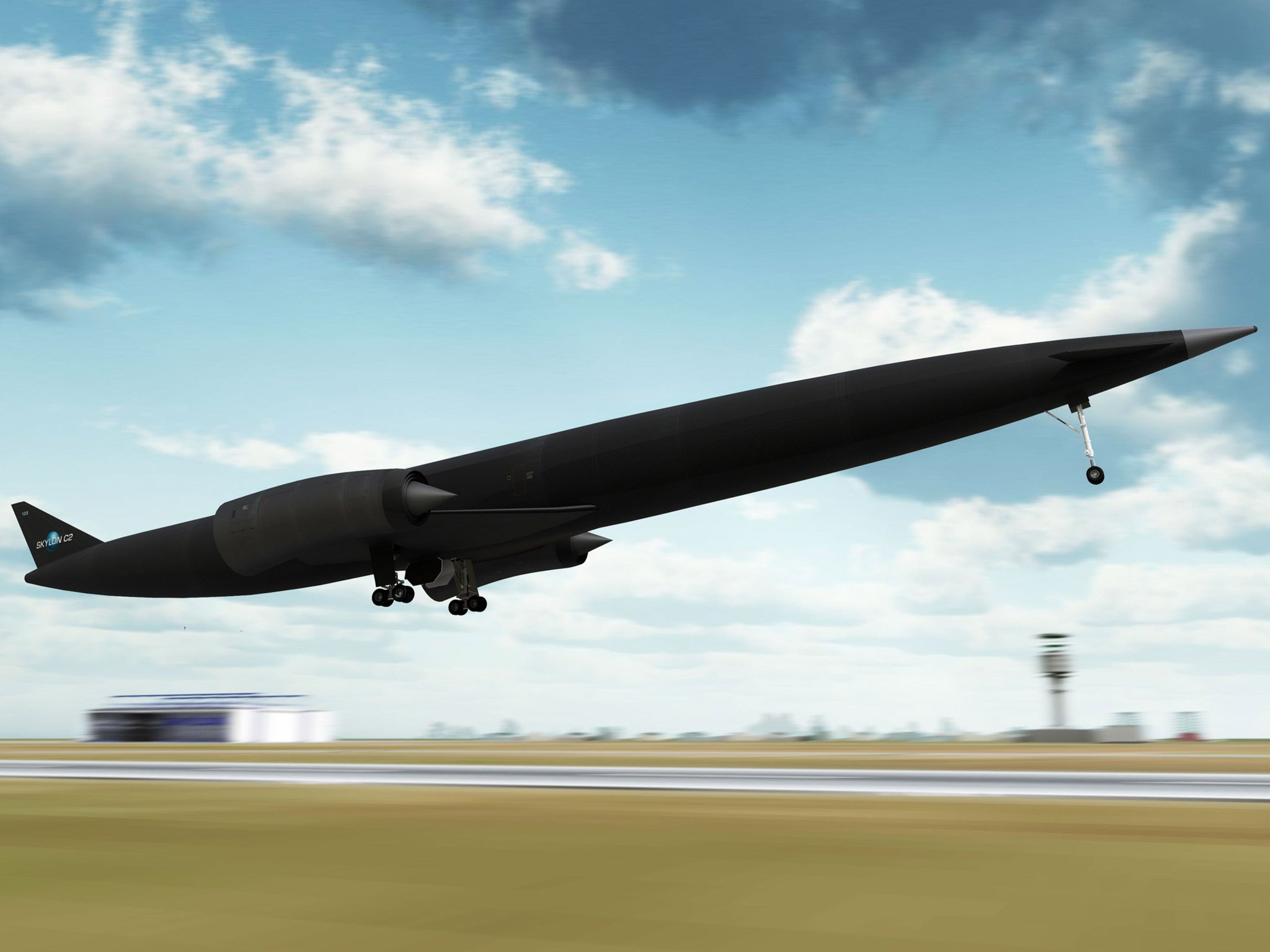Space plane that could carry people anywhere in four hours another step towards completion
Full version of unique engine, the Sabre, could be on sale within 10 years and will be added to the Skylon plane

A plane that could one day fly anywhere in the world in four hours, and carry spaceships out of the atmosphere without using rockets, is another step towards being built after it received approval from the European Space Agency (ESA).
The ESA acted as an independent auditor for Reaction Engines’ Sabre technology, which works like a jet engine in the atmosphere and a rocket in space and could transform air travel. The company hopes to eventually attach the engine to its Skylon plane.
Reaction Engines says that the technology is the biggest step in air travel since the jet engine was invented.
Reaction Engines, a small British company that hasn’t actually built any planes yet, was told by the ESA that its technology was viable.
While the jet is yet to be built, the company has the special heat exchanger that cools air incredibly quickly — taking it from 1,000 degrees Celsius to minus 150 degrees in one hundredth of a second. That helps it get around the issues that have so far held jet engines back to a maximum of about 2.5 times the speed of sound. The new engine will allow it to get up to twice that speed.
Because the engine uses atmospheric air, rather than putting carrying oxygen in tanks like a rocket does, it could use much less fuel and help it go faster.
Reaction Engines hopes one day to build the engine into a special plane, named Skylon, which could carry passengers to anywhere in the world within four hours. It could also carry space ships out of the atmosphere, removing the need for expensive and inefficient rockets.
The company has not disclosed how the engine works — though it is said to involve tightly-packed, very small pipes — and so the ESA’s approval is an important public declaration of the validity of the project. It is thought to be the only piece of technology of its kind in development. It will now look to raise about £250 million to fund a three-year development of a small version of the engine. It then hopes to have a full version ready for sale in 10 years.
Subscribe to Independent Premium to bookmark this article
Want to bookmark your favourite articles and stories to read or reference later? Start your Independent Premium subscription today.

Join our commenting forum
Join thought-provoking conversations, follow other Independent readers and see their replies